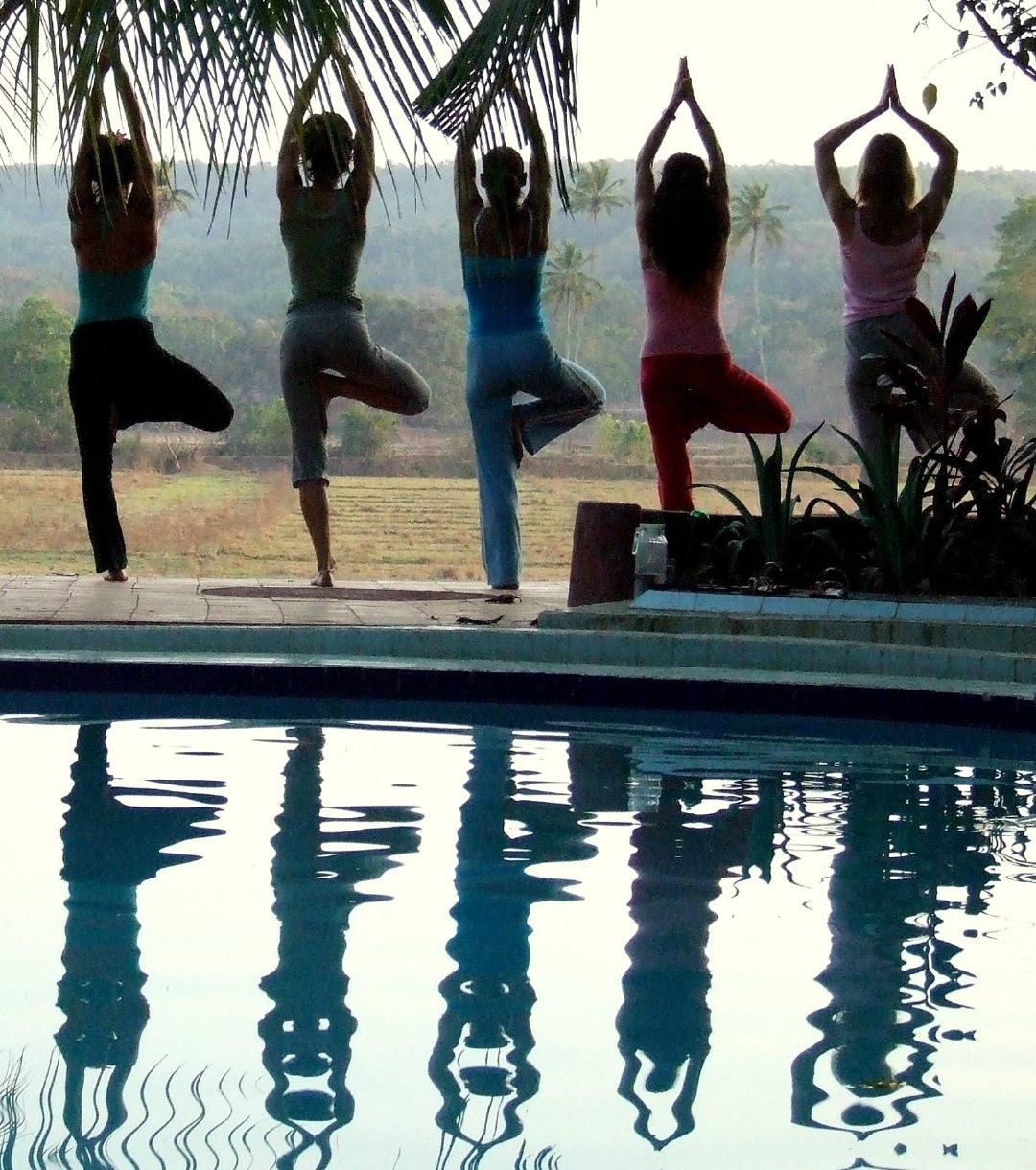How Yoga Became A $27 Billion Industry — And Reinvented American Spirituality
Across America, students, stressed-out young professionals, CEOs and retirees are among those who have embraced yoga, fueling a $27 billion industry with more than 20 million practitioners — 83 percent of them women, says Huffington Post’s Carolyn Gregoire in her article “How Yoga Became A $27 Billion Industry — And Reinvented American Spirituality”.
Yoga has come to be seen as something of a panacea for the ailments of modern society — tech overload, disconnection and alienation, insomnia, stress and anxiety. And in some cases, yoga may be one antidote to the modern speed of life that’s created a culture of stress and burnout. But inside of today’s instant-gratification culture, it’s very likely that yoga practitioners are just seeking a bandaid or quick fix for their bad habits, like being on the phone all day, in front of the TV, or on their computer.
Why do we have so much “stuff” on our minds and all this mental restlessness to begin with? Is Yoga or meditation really going to bring us inner peace and spirituality if we also continue our bad thinking habits, restlessness, and having groundless minds? If something is promoted as too good to be true, then it usually is. Or, if it’s a quick fix, then it usually isn’t. Why is it that we, especially Americans, seem to prefer to just pop a pill, go on a crash diet, or get enlightened on a weekend retreat?
Nature, solitude, and contentment have always been available and free to us. The best things in life have always been free– simple pleasures, relationships, and nature. The growing demand for complex “spiritual” programs or expensive yoga classes seems to be a symptom of a deeper cause, a festering wound we have allowed, that I’m afraid, won’t be cured by yoga. We cannot solve our problems, a wise person said, by the same thinking that created them. Anyway, why are we so hungry to find inner peace, tranquillity, and contentment? What marketing hype, peer pressure, or cultural indoctrinations have we succumbed to (this time)? And, why are we so eager and willing to pay a yoga instructor or follow a guru who promises to transform us or to turn us into someone better (eg. a more happy, healthy, self-realized person)?
Yoga seems to be an elitist practice, warns Gregoire, that’s inaccessible to the majority of Americans [because yoga instruction is expensive]. As one Bustle writer put it, “inner peace comes with a high price tag.”
More than 1 in 3 Americans describe themselves as spiritual but not religious, according to a 2012 Pew Forum survey. Yoga meditation has its benefits, but not without its costs, and those costs include years of diligent, disciplined practice. A quick fix or solution to our bad thinking habits, it is not. There is no easy, quick solution that will fix years of bad thinking habits and deep-seated nervous restlessness. Traditional yoga of the East, the mental discipline, is not something you need to buy a cushy floor-mat for and show up at a yoga studio to do. As a mental discipline and for presence of mind, yoga meditation can be beneficial, but only when practiced all the time and everywhere for years.
The rise of more people who describe themselves as “spiritual but not religious” has made more popular than ever the belief that yoga is a spiritual panacea– the illusion, that if we just believe in this new age religion, this new-ancient faith tradition, and do a little yoga, we just might, this time, be able to save ourselves from ourselves. Many people and advertisements claim that we need to consume more goods and have more stuff to find excitement, joy, and meaning in life. But, learn to be skeptical of these false beliefs and appreciate the simple things in your life– immerse yourself in your thoughts, nature, relationships– and you can save yourself and give yourself a full and rewarding life instantly.
Read the full HuffPost article here How Yoga Became A $27 Billion Industry — And Reinvented American Spirituality.



Nicely worded article! There are two types of yoga emerging in the West: the gym-Lululemon type which is part of the $27 Billion industry, then there is the traditional kind that stems from the Patanjali Yoga Sutras and does not rely solely on asana. Sadly, the second kind is dying fast in favor of “power yoga” “nude yoga” “SUP yoga” and other corruptions of the practice. It is similar to what is happening with traditional Buddhist practices and new age-y types trying to market the practice. I predict that the gym-Lululemon style will die out in favor of the next fitness craze (Lululemon has lost a good chunk of it’s stock price in the past year). I suspect Pantanjali’s style will prevail, just on a much smaller scale…the way it was before the West got a hold of it.
Good point. Maybe taking a break and “listening to your body” isn’t the solution. Maybe the problem is that you have to.
It is interesting that we search and search – for inner meaning, inner peace, inner wisdom and don’t even realize that as we seek to find ourselves – we become very self-centered. I know I do. Life is full of these paradoxes.
@yogiromero: Yes, the trendy, fashionable-type yoga postures are the easiest to access for most people. Perhaps, some even go on to practice yoga meditation. So, perhaps, hatha or Luluemon yoga is a gateway for some practitioners to explore meditation. The traditional yoga, like Patanjali’s yoga meditation sutras, will, I think always be esoteric and have mystical appeal to a smaller number of practitioners. This blog tries to explore the borderlands between meditative mysticism and rationale, or objective, spirituality rather than supernatural esoterica. Thanks for your comments.
Hi Will: If we wait until “we have to” take a break to listen to our body, then we are probably too late. Then we come to “listening” as a sort of desperation or grasping. Better late than never, though. Balance, and putting away our restless devices, seems to be a challenge worth the mindfulness. Thanks for your comment.
@terrijo: Great points. Implicit in searching, especially for “inner”-anything is self-centeredness. There’s nothing inherently wrong or bad with self-centeredness. But, I think there’s a natural balance to be struck between striving or seeking and just being or contentment with what is. The tension between seeking and contentment is, perhaps, the creative, natural state we are. No arriving there, just is. Thanks for your sharing your observations and comments in these discussions.